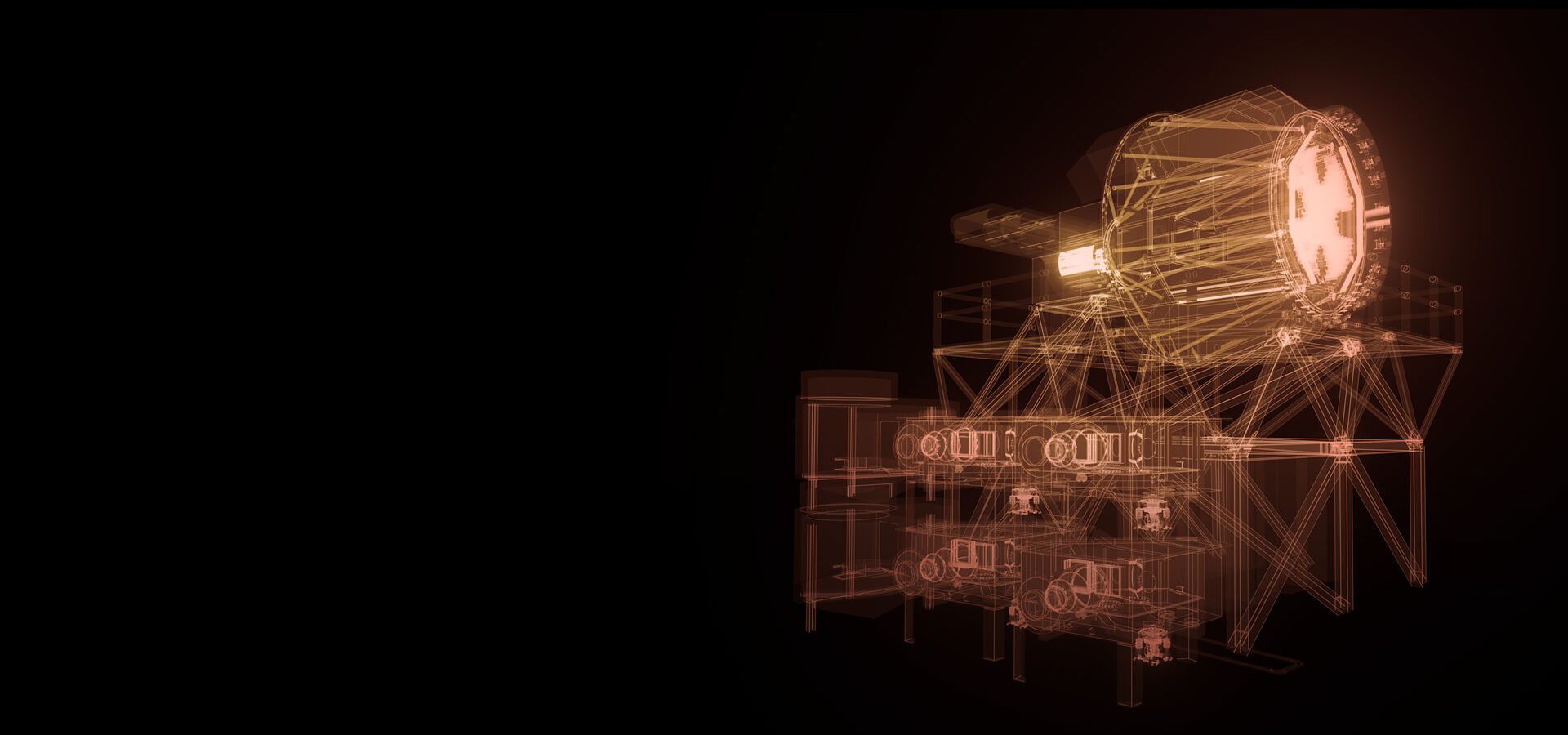
European
Southern
Observatory


By peering at objects from stars at the heart of the Milky Way to the most distant galaxies at the very edge of the observable Universe, MOSAIC will enable astronomers to trace the growth of galaxies and the distribution of matter from the Big Bang to the present day.
By peering at objects from stars at the heart of the Milky Way to the most distant galaxies at the very edge of the observable Universe, MOSAIC will enable astronomers to trace the growth of galaxies and the distribution of matter from the Big Bang to the present day.
By peering at objects from stars at the heart of the Milky Way to the most distant galaxies at the very edge of the observable Universe, MOSAIC will enable astronomers to trace the growth of galaxies and the distribution of matter from the Big Bang to the present day.
Astronomers face a major challenge: the Universe contains hundreds of billions of galaxies, each of which contains hundreds of billions of stars. Surveying all of these and unravelling the mysteries behind the evolution of the Universe calls for a multi-object spectrograph that can measure the light from many different objects at the same time. MOSAIC is being built to do just this, as well as to serve as a follow-up machine of future space-based missions, such as the James Webb Space Telescope, as well as the European Space Agency's Euclid, and Athena missions.
MOSAIC will conduct the first exhaustive inventory of matter in the early Universe. This will lift the veil on how matter is distributed in and between galaxies, resulting in a tremendous leap forward in our understanding of how present-day galaxies formed and evolved.
After the Big Bang, the Universe cooled down and grew dark. Only once dark matter and gas had clumped together did stars and galaxies begin to shine. Energetic radiation from those stars reionised (ripped electrons from the atomic nuclei) the remaining neutral gas, but exactly when and how this all occurred remains a mystery that MOSAIC will contribute to solving. Identifying the main — and elusive — ionising sources requires detailed observations of a specific hydrogen emission line (the Lyman-alpha line) of very distant objects.
Using MOSAIC to make these observations will enable astronomers to find out the ionisation state of the intergalactic medium (IGM), in the first few billion years of the universe (from redshift 5 to 13), allowing them to reconstruct the timeline of reionisation. MOSAIC will provide the largest observational sample of the very first galaxies at sufficient spectral resolving power to determine the properties of their stellar populations, as well as of the interstellar medium (ISM), the matter that exists in between the stars. The instrument will also be used to search for the presence of gas flowing out from these galaxies.
Furthermore, MOSAIC will be used to identify the "missing" baryons in the circumgalactic medium (CGM), the gas surrounding galaxies. Taking advantage of pairs of galaxies where one is in front of the other from our perspective, astronomers will observe light from the background galaxy passing through gas surrounding the foreground galaxy. This foreground gas leaves absorption lines features in the spectrum of the background galaxy that will allow astronomers to find out what elements are present in the gas, and what their ionisation states are. Such studies have already been conducted on 8-metre telescopes using quasars as the background object. With the ELT, astronomers will be able to conduct the same analysis using dimmer and more widespread Lyman break galaxies as background sources instead of quasars, which will provide many more galaxy pairs to be studied, giving statistics at an epoch which remains out of reach of current facilities.
To satisfy MOSAIC's science cases and requirements, the Phase A design includes three observation modes:
Wavelength
0.39 − 1.80 µm (baseline)
Spectral resolution
5,000 − 20,000
Field-of-view
40 square arcmin
High Multiplex Mode
LR: 138 in VIS and 180 in NIR and HR: 60 in VIS and 180 in NIR
High Definition Mode
8 (baseline)
Tool to simulate instrument observations
Description of the scientific motivations for the instrument, as initially submitted by the Instrument Consortium
Description of the characteristics of the instrument required by the science case
The MOSAIC project is managed by an international consortium composed of research institutes from European and overseas countries.
MOSAIC is being designed and built under the leadership of the National Institute for Earth Sciences and Astronomy at the National Centre for Scientific Research (CNRS-INSU, France) by a consortium of partners in France, the United Kingdom, the Netherlands, Brazil, Germany, Austria, Finland, Italy, Portugal, Spain, Sweden, Switzerland. In addition to CNRS-INSU, the MOSAIC consortium consists of Durham University (United Kingdom), the Galaxies, Stars, Physics and Instrumentation Department at Paris Observatory (France), the Institute for Research in Astrophysics and Planetology at the University of Toulouse (France), the Marseille Astrophysics Laboratory (France), the National Physics Laboratory (Brazil), the Leibniz Institute for Astrophysics Potsdam (Germany), the LESIA Space and Astrophysics Instrumentation Research Laboratory at Paris Observatory (France), the Netherlands Research School for Astronomy (Netherlands), the University of São Paulo (Brazil), the University of Amsterdam (Netherlands), the University of Oxford / RAL Space (United Kingdom), the UK Astronomy Technology Centre (United Kingdom), University of Helsinki (Finland), the University of Michigan (US), Stockholm University (Sweden), LSW Heidelberg (Germany), the University of Geneva (Switzerland), the University of Vienna (Austria), IACE – Universidade de Lisboa (Portugal), Space Telescope Science Institute (US), Universidad Complutense de Madrid (Spain), INAF Roma (Italy). ESO also contributes to the project development.
Principal Investigator
Roser Pello (LAM, France)
Mathieu Puech (LUX – Observatoire de Paris/PSL, France)
Project Scientist
Jay Stephan (UK Astronomy Technology Centre, UK)
Project Manager
Hermine Schnetler (Observatoire de Paris/PSL, France)
ESO Project Engineer
ESO Project Scientist
ESO Project Manager
We use cookies that are essential for accessing our websites and using our services. We also use cookies to analyse, measure and improve our websites’ performance, to enable content sharing via social media and to display media content hosted on third-party platforms.
The European Organisation for Astronomical Research in the Southern Hemisphere (ESO) is the pre-eminent intergovernmental science and technology organisation in astronomy. It carries out an ambitious programme focused on the design, construction and operation of powerful ground-based observing facilities for astronomy.
This Cookies Policy is intended to provide clarity by outlining the cookies used on the ESO public websites, their functions, the options you have for controlling them, and the ways you can contact us for additional details.
Cookies are small pieces of data stored on your device by websites you visit. They serve various purposes, such as remembering login credentials and preferences and enhance your browsing experience.
Essential cookies (always active): These cookies are strictly necessary for the proper functioning of our website. Without these cookies, the website cannot operate correctly, and certain services, such as logging in or accessing secure areas, may not be available; because they are essential for the website’s operation, they cannot be disabled.
Functional Cookies: These cookies enhance your browsing experience by enabling additional features and personalization, such as remembering your preferences and settings. While not strictly necessary for the website to function, they improve usability and convenience; these cookies are only placed if you provide your consent.
Analytics cookies: These cookies collect information about how visitors interact with our website, such as which pages are visited most often and how users navigate the site. This data helps us improve website performance, optimize content, and enhance the user experience; these cookies are only placed if you provide your consent. We use the following analytics cookies.
Matomo Cookies:
This website uses Matomo (formerly Piwik), an open source software which enables the statistical analysis of website visits. Matomo uses cookies (text files) which are saved on your computer and which allow us to analyze how you use our website. The website user information generated by the cookies will only be saved on the servers of our IT Department. We use this information to analyze www.eso.org visits and to prepare reports on website activities. These data will not be disclosed to third parties.
On behalf of ESO, Matomo will use this information for the purpose of evaluating your use of the website, compiling reports on website activity and providing other services relating to website activity and internet usage.
Matomo cookies settings:
Additional Third-party cookies on ESO websites: some of our pages display content from external providers, e.g. YouTube.
Such third-party services are outside of ESO control and may, at any time, change their terms of service, use of cookies, etc.
YouTube: Some videos on the ESO website are embedded from ESO’s official YouTube channel. We have enabled YouTube’s privacy-enhanced mode, meaning that no cookies are set unless the user actively clicks on the video to play it. Additionally, in this mode, YouTube does not store any personally identifiable cookie data for embedded video playbacks. For more details, please refer to YouTube’s embedding videos information page.
Cookies can also be classified based on the following elements.
Regarding the domain, there are:
As for their duration, cookies can be:
Cookie settings: You can modify your cookie choices for the ESO webpages at any time by clicking on the link Cookie settings at the bottom of any page.
In your browser: If you wish to delete cookies or instruct your browser to delete or block cookies by default, please visit the help pages of your browser:
Please be aware that if you delete or decline cookies, certain functionalities of our website may be not be available and your browsing experience may be affected.
You can set most browsers to prevent any cookies being placed on your device, but you may then have to manually adjust some preferences every time you visit a site/page. And some services and functionalities may not work properly at all (e.g. profile logging-in, shop check out).
The ESO Cookies Policy may be subject to future updates, which will be made available on this page.
For any queries related to cookies, please contact: pdprATesoDOTorg.
As ESO public webpages are managed by our Department of Communication, your questions will be dealt with the support of the said Department.